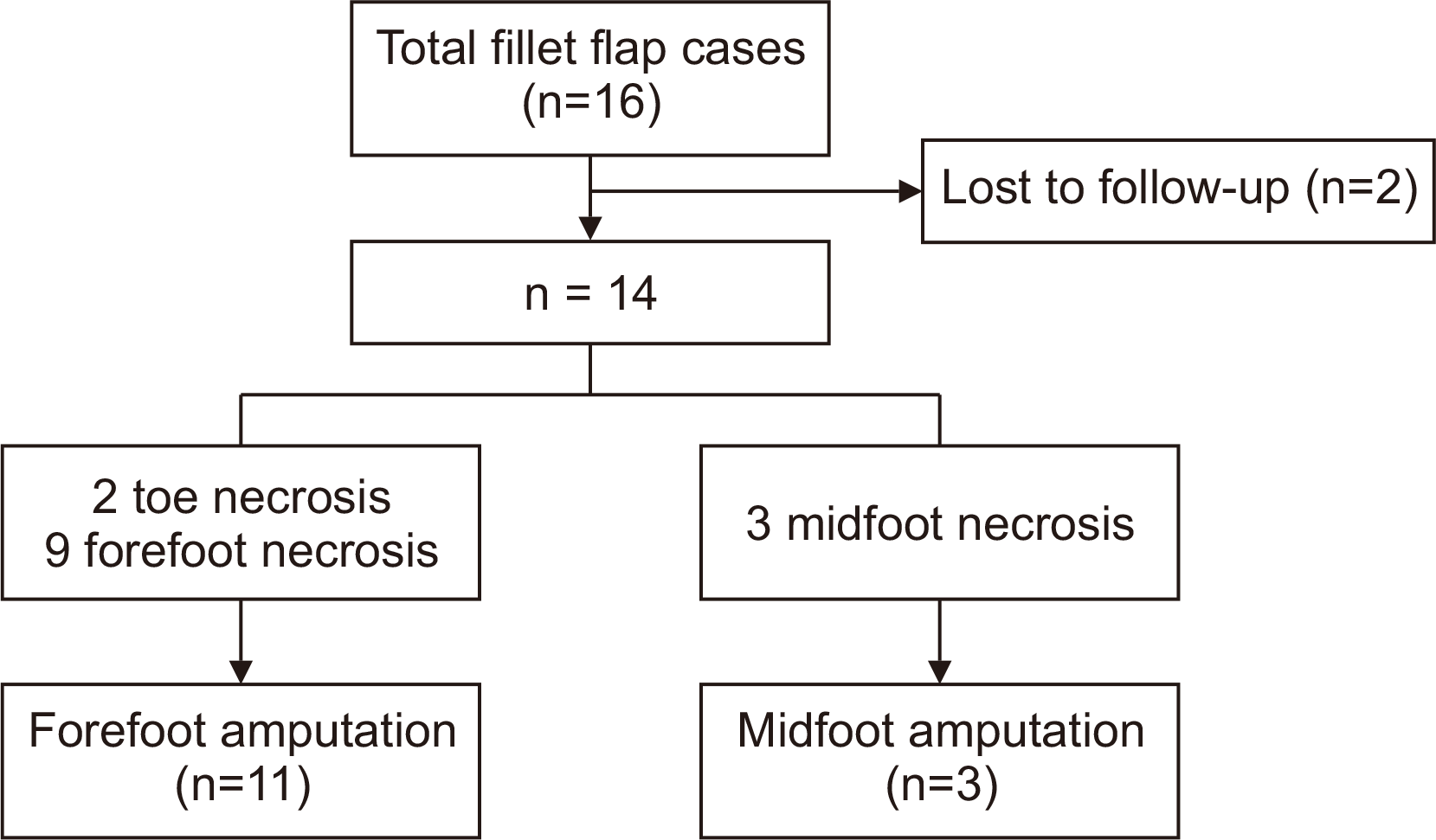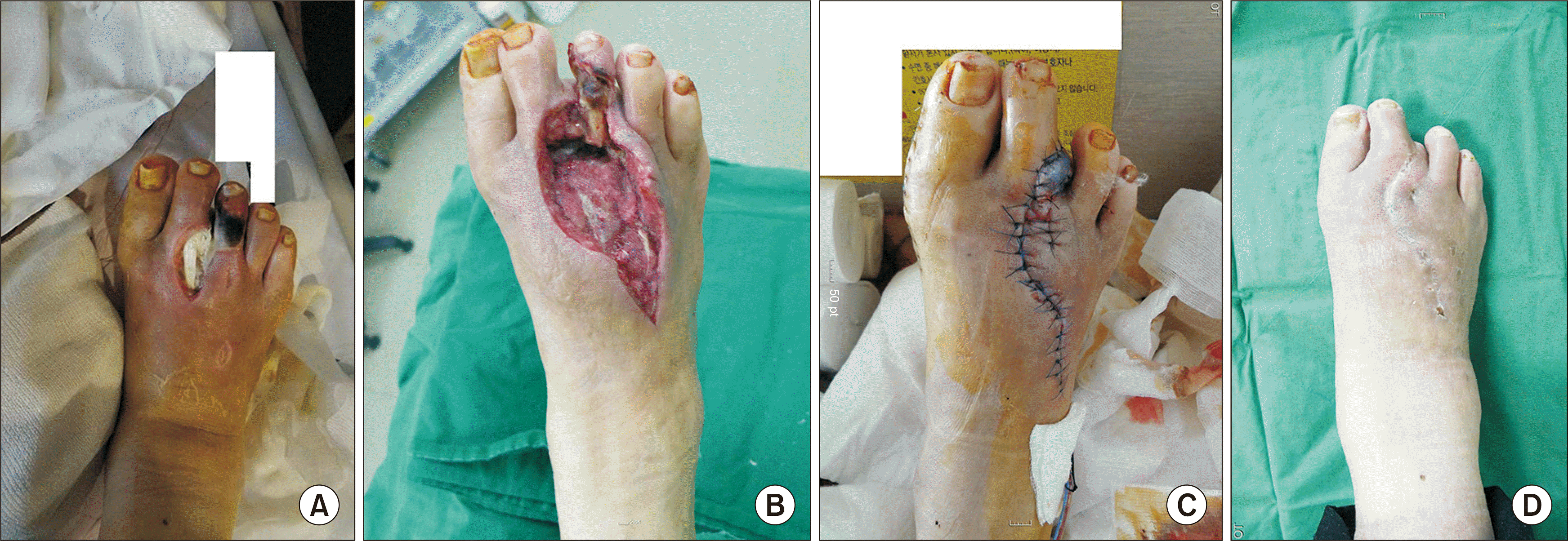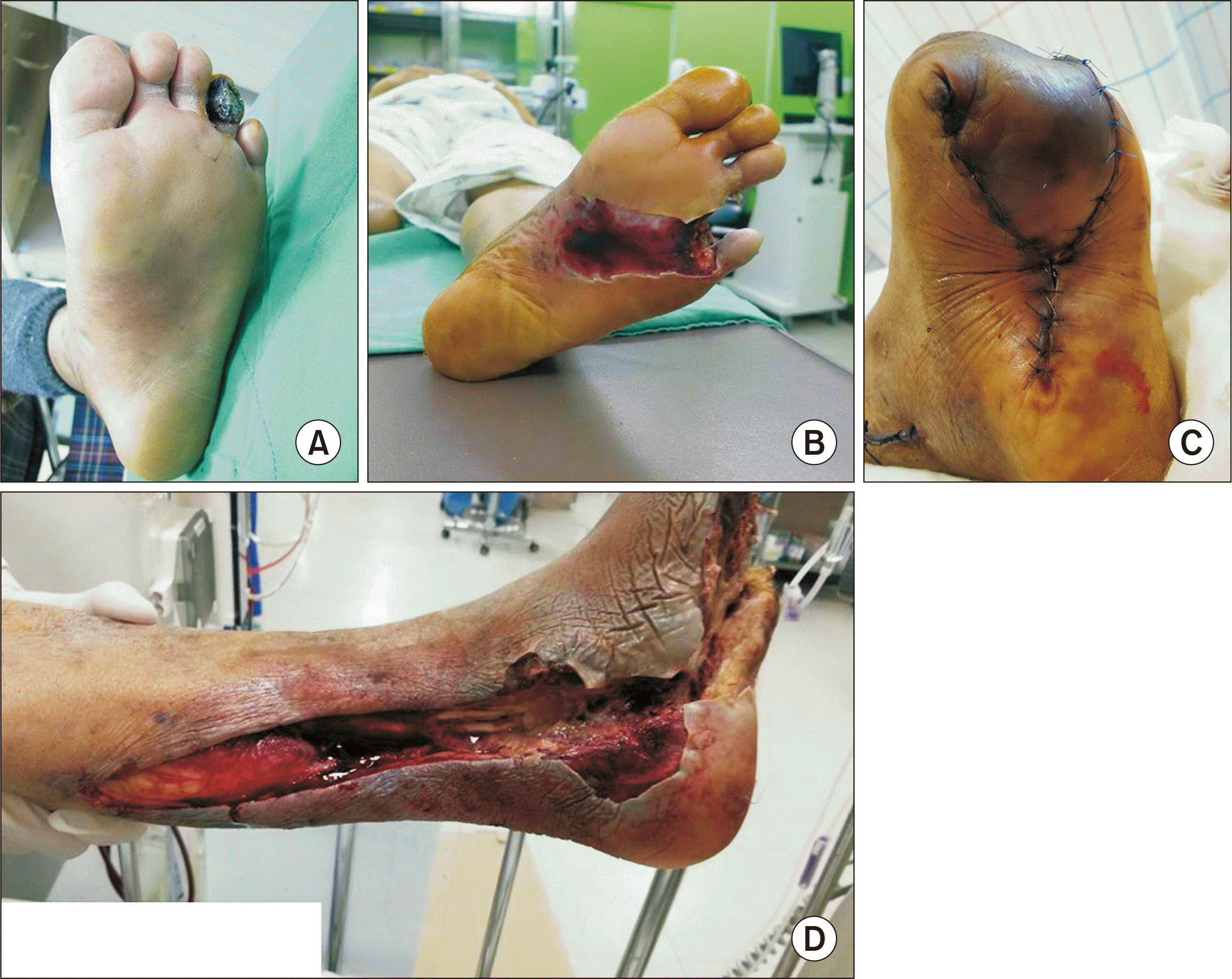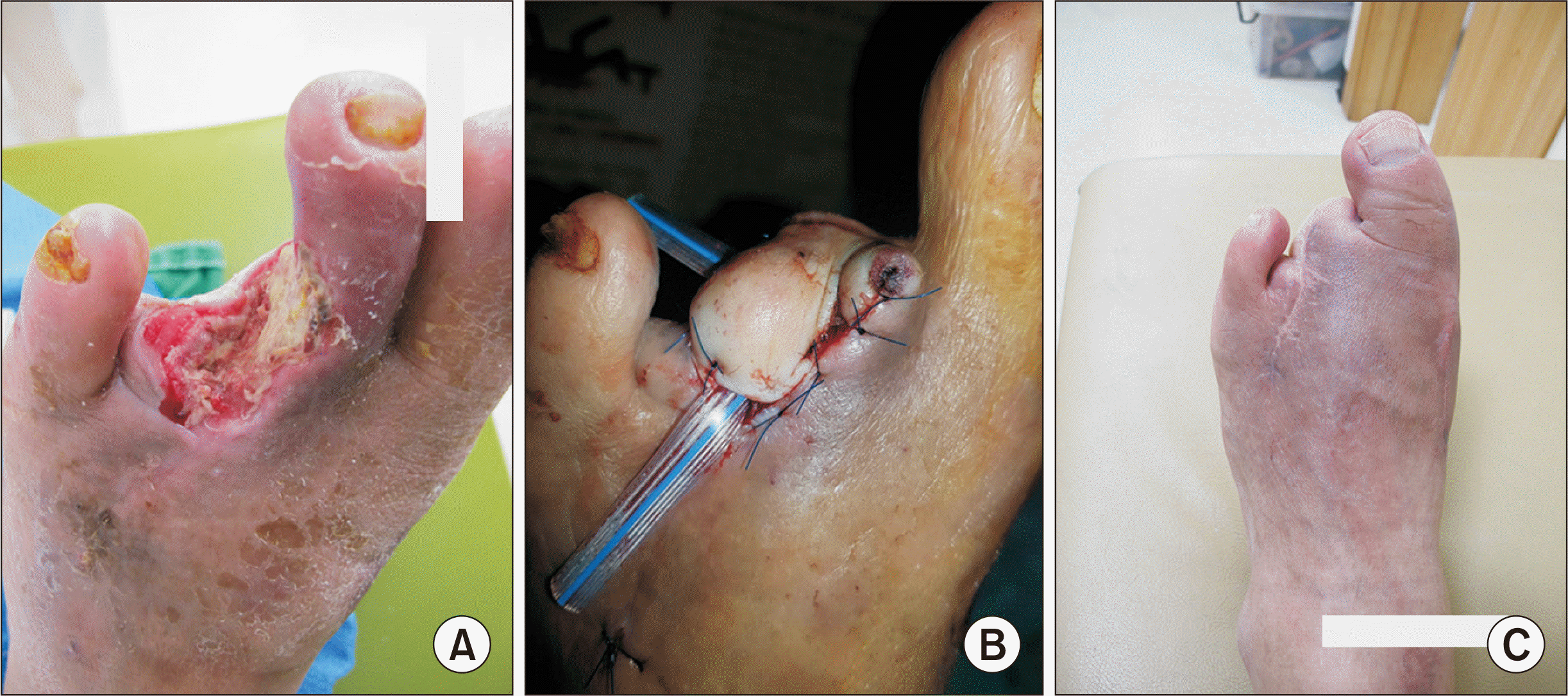3. Moxey PW, Gogalniceanu P, Hinchliffe RJ, Loftus IM, Jones KJ, Thompson MM, et al. 2011; Lower extremity amputations--a review of global variability in incidence. Diabet Med. 28:1144–53. doi:
10.1111/. DOI:
10.1111/j.1464-5491.2011.03279.x. PMID:
21388445.
4. van Netten JJ, Fortington LV, Hinchliffe RJ, Hijmans JM. 2016; Early postoperative mortality after major lower limb amputation: a systematic review of population and regional based studies. Eur J Vasc Endovasc Surg. 51:248–57. doi:
10.1016/j.ejvs.2015.10.001. DOI:
10.1016/j.ejvs.2015.10.001. PMID:
26588994.

6. Waters RL, Perry J, Antonelli D, Hislop H. 1976; Energy cost of walking of amputees: the influence of level of amputation. J Bone Joint Surg Am. 58:42–6. DOI:
10.2106/00004623-197658010-00007. PMID:
1249111.
7. Seo SG, Yeo JH, Kim JH, Kim JB, Cho TJ, Lee DY. 2013; Negative-pressure wound therapy induces endothelial progenitor cell mobilization in diabetic patients with foot infection or skin defects. Exp Mol Med. 45:e62. doi:
10.1038/emm.2013.129. DOI:
10.1038/emm.2013.129. PMID:
24232261. PMCID:
PMC3849576.

10. Han HH, Lee YJ, Moon SH. 2018; Foot reconstruction using a free proximal peroneal artery perforator flap: anatomical study and clinical application. J Plast Reconstr Aesthet Surg. 71:883–8. doi:
10.1016/. DOI:
10.1016/j.bjps.2018.01.044. PMID:
29525363.

13. Attinger C. 1995; Soft-tissue coverage for lower-extremity trauma. Orthop Clin North Am. 26:295–334.

16. Aerden D, Vanmierlo B, Denecker N, Brasseur L, Keymeulen B, Van den Brande P. 2012; Primary closure with a filleted hallux flap after transmetatarsal amputation of the big toe for osteomyelitis in the diabetic foot: a short series of four cases. Int J Low Extrem Wounds. 11:80–4. doi:
10.1177/1534734612446640. DOI:
10.1177/1534734612446640. PMID:
22561521.
23. Wong KL, Nather A, Chanyarungrojn AP, Shen L, Ong TE, Elangovan RD, et al. 2014; Clinical outcomes of ray amputation in diabetic foot patients. Ann Acad Med Singap. 43:428–32.







 PDF
PDF Citation
Citation Print
Print




 XML Download
XML Download